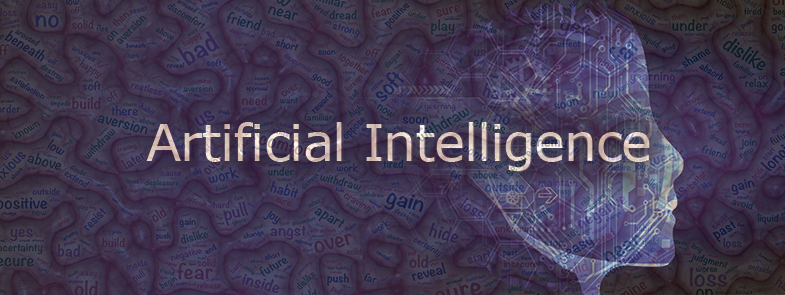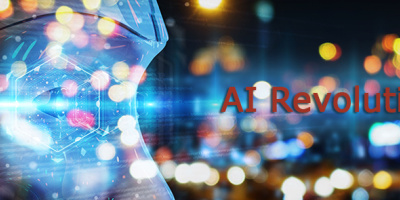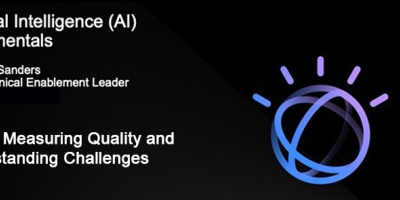As artificial intelligence infuses into the fabric of society, current and future generations are becoming more dependent on it for making every decision. Humans and AI are coexisting side by side creating a new society. Hopefully, it will remain symbiotic.
Looking back over my 50 plus years on this planet, I realize that each decade has been associated with something significant. Staying away from political scandals, the ’60s was about color TVs, the hippie movement, and youth-oriented countercultures. The ’70s I associate with VCRs, early cell phones, disco, glam rock music, flared pants, and high waistbands. The ’80s brought personal hi-fi systems, microwave ovens, personal computers, the beginning of the end of the cold war, the fall of the Berlin wall, yuppies, Rubik’s cube, the AIDS crisis. The ’90s saw a sharp adoption of personal computers and laptops and the birth of the Internet, which really changed life as we knew it. The 2000’s was “digital everything,” the rise of social media, and a global financial crisis. The 2010s bring to mind smartphone proliferation, online shopping, social media becoming the main way for millennials to communicate, a focus on climate change, and what I refer to as “the second birth” of artificial intelligence.
While 2020 will no doubt be remembered for how COVID-19 changed our lives, I see a generation of people growing more dependent on AI without knowing it. The reason I believe AI took hold this time was due to continued massive data growth, availability of cheap and powerful computing capability, mass local and cloud storage, open-source machine learning, AI libraries, and organizations heavily investing in data science and data science practitioners. Another reason it has been successful is intuitive tools like IBM Watson Studio that put AI in reach of the masses—from experts to high-school students.
Follow the Leader(s)
It only takes one or two companies in a particular industry to demonstrate a competitive advantage over their peers, and the rest start to take notice. Let’s look at two examples.
Online shopping marketplaces offer literally everything from A to Z. Ranking algorithms composed of direct and indirect factors are used to match users’ search queries to products they are most likely to purchase. Algorithms attempt to optimize the experience so consumers don’t need more than one or two clicks to find what they are looking for.
The automobile industry is experiencing a revolution with the rise in cars leveraging AI with self-driving and autopilot capabilities. Defects across vehicles are collected using a crowd-sourcing model, enabling manufacturers of vehicles to learn about performance issues, causes, wear and tear and to issue vehicles with patch fixes when safe to do so. Cars are able to share local information and insights, alerting each other of traffic issues local to them.
“I Can’t Live Without You, AI”
What strikes me is our growing dependency on AI, creating and accepting an environment where much of the decision-making process is automated. This can be beneficial when decisions are highly complex and we may not have the expertise to make informed decisions. We are seeing the birth of a generation that, knowingly or unknowingly, defers more responsibility to AI systems—and maybe less to our own brains. In some ways, this democratizes power in that we feel we are more empowered by AI augmenting our knowledge. That said, AI is also used to influence the entertainment we watch, how we formulate our value systems, views on world events, politics, the music we listen to. If all information was truthful, this might not be an issue, but there is probably as much disinformation as there is factual information. And therein lies a big problem.
AI is only as good as the information it consumes and learns from. Machine-learning models trained on flawed or inaccurate data will produce flawed (biased) predictions and outcomes (here be dragons).
I maintain that the benefit comes when AI is used to augment humans’ decisions—and yes, there are times when autonomous AI has advantages of being able to learn from tens of thousands of complex transactions and interactions per second that no human can process or analyze as timely, consistently, and efficiently. Similarly, there are decisions that are based on pure emotion of the heart and morals alone—at least for the time being.
Go Ahead, I’m Listening
How many of us have casually talked with our friends or spouses about various subjects, only to see offers minutes later in our emails directly linked to that earlier conversation? Some consider AI to be an invasion of privacy. There are now multiple generations almost dependent on their phones when it comes to making a decision. It will only be a matter of time before we ask our phones what we should do, what to purchase, which events we should attend, what to wear or eat each day.
Is it acceptable to simply defer our decision-making and the responsibility of our actions and their outcomes to the AI system? “But <AI bot name> told me to do it.”
The Benefits Outweigh the Perceived Negatives
On balance, I would say the that the potential good AI can bring to society far outweighs the perceived negatives and risks. It’s how we as humans implement and use AI responsibly and ethically that will make or break its success. There will be those that gain and those that will not. AI should be for the benefit of the masses without the detriment to any. We saw recently issues with facial recognition software resulting in falsely identifying individuals and groups of people as potential threats and becoming targets for discrimination. As a result, many companies decided to stop developing the technology for general use. There are, however, applications in which facial and human-movement recognition technologies can be beneficial in learning about human emotions and moods through facial and body language, particularly in the areas of robotics and what I refer to as “simulans” (synthetic beings).
Clearly, ethics, or lack thereof, will play a significant role in how AI is applied for the benefit of humankind.
For Generations to Come: A Longer-Term Outlook
Looking at the rapid advancement of technology over the last 10 years, it’s conceivable that smart systems will be running more aspects of personal and business decision-making—for faster, smarter outcomes. Issues around trust and transparency will have all but disappeared as AI decisions become commonplace in consumers’ lives. We will become dependent on pervasive AI, much as we have with electricity, cars, and the smartphones of today.
Robots in our homes will assist us in our everyday lives.
Humans and synthetic beings will coexist. Human intelligence will be augmented with smart technologies that have the ability to upload “experiences” and their experiential data through a neural interface and vice versa.
The lines between digital life and real life will blur. Humans will be able to coexist in both worlds, making use of virtual and augmented reality. Think of the film Ready Player One.
It is likely that food will be “manufactured” for speed, convenience, and cost. Contamination will be reduced by growing it from stem cells in laboratories to meet predicted demands.
We will take for granted that every application, device, and service we use will be smart and interconnected.
While conflicts may continue, they will be more cyber-based. Disposable synthetic beings will be deployed on front lines to preserve human life. Humans will be able to communicate with and control our synthetic, cloned counterparts to handle day-to-day conflicts (such as law enforcement).
As I stated in an earlier article, maybe our legal and justice systems will rely on AI to arrive at unbiased rulings and legal outcomes.
AI has changed and will continue to change society. If you find the subject of AI as fascinating as I do, please check out the book that I had the opportunity and privilege to co-author titled Artificial Intelligence: Evolution and Revolution.

























 More than ever, there is a demand for IT to deliver innovation. Your IBM i has been an essential part of your business operations for years. However, your organization may struggle to maintain the current system and implement new projects. The thousands of customers we've worked with and surveyed state that expectations regarding the digital footprint and vision of the company are not aligned with the current IT environment.
More than ever, there is a demand for IT to deliver innovation. Your IBM i has been an essential part of your business operations for years. However, your organization may struggle to maintain the current system and implement new projects. The thousands of customers we've worked with and surveyed state that expectations regarding the digital footprint and vision of the company are not aligned with the current IT environment. TRY the one package that solves all your document design and printing challenges on all your platforms. Produce bar code labels, electronic forms, ad hoc reports, and RFID tags – without programming! MarkMagic is the only document design and print solution that combines report writing, WYSIWYG label and forms design, and conditional printing in one integrated product. Make sure your data survives when catastrophe hits. Request your trial now! Request Now.
TRY the one package that solves all your document design and printing challenges on all your platforms. Produce bar code labels, electronic forms, ad hoc reports, and RFID tags – without programming! MarkMagic is the only document design and print solution that combines report writing, WYSIWYG label and forms design, and conditional printing in one integrated product. Make sure your data survives when catastrophe hits. Request your trial now! Request Now. Forms of ransomware has been around for over 30 years, and with more and more organizations suffering attacks each year, it continues to endure. What has made ransomware such a durable threat and what is the best way to combat it? In order to prevent ransomware, organizations must first understand how it works.
Forms of ransomware has been around for over 30 years, and with more and more organizations suffering attacks each year, it continues to endure. What has made ransomware such a durable threat and what is the best way to combat it? In order to prevent ransomware, organizations must first understand how it works. Disaster protection is vital to every business. Yet, it often consists of patched together procedures that are prone to error. From automatic backups to data encryption to media management, Robot automates the routine (yet often complex) tasks of iSeries backup and recovery, saving you time and money and making the process safer and more reliable. Automate your backups with the Robot Backup and Recovery Solution. Key features include:
Disaster protection is vital to every business. Yet, it often consists of patched together procedures that are prone to error. From automatic backups to data encryption to media management, Robot automates the routine (yet often complex) tasks of iSeries backup and recovery, saving you time and money and making the process safer and more reliable. Automate your backups with the Robot Backup and Recovery Solution. Key features include: Business users want new applications now. Market and regulatory pressures require faster application updates and delivery into production. Your IBM i developers may be approaching retirement, and you see no sure way to fill their positions with experienced developers. In addition, you may be caught between maintaining your existing applications and the uncertainty of moving to something new.
Business users want new applications now. Market and regulatory pressures require faster application updates and delivery into production. Your IBM i developers may be approaching retirement, and you see no sure way to fill their positions with experienced developers. In addition, you may be caught between maintaining your existing applications and the uncertainty of moving to something new. IT managers hoping to find new IBM i talent are discovering that the pool of experienced RPG programmers and operators or administrators with intimate knowledge of the operating system and the applications that run on it is small. This begs the question: How will you manage the platform that supports such a big part of your business? This guide offers strategies and software suggestions to help you plan IT staffing and resources and smooth the transition after your AS/400 talent retires. Read on to learn:
IT managers hoping to find new IBM i talent are discovering that the pool of experienced RPG programmers and operators or administrators with intimate knowledge of the operating system and the applications that run on it is small. This begs the question: How will you manage the platform that supports such a big part of your business? This guide offers strategies and software suggestions to help you plan IT staffing and resources and smooth the transition after your AS/400 talent retires. Read on to learn:
LATEST COMMENTS
MC Press Online